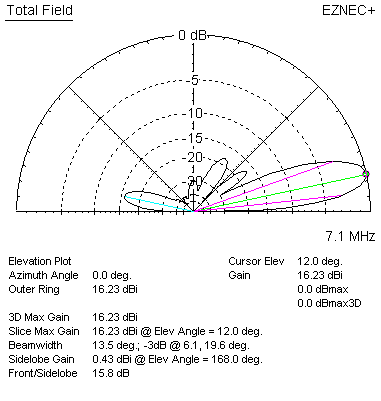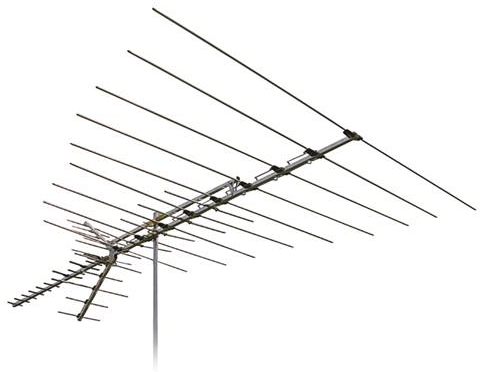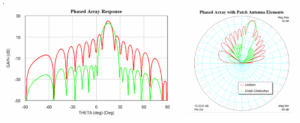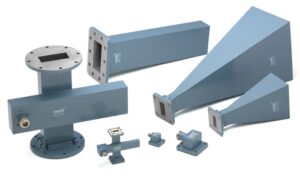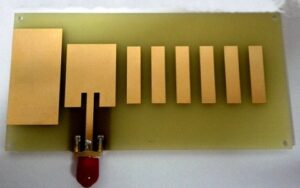Table of Contents
Relationship Between Wavelength and Antenna Size
An antenna’s size is directly linked to the wavelength of the signals it is designed to receive or emit. The rule of thumb in antenna design is that the effective size of an antenna should roughly equate the wavelength of the radio wave. This relation ensures optimal capabilities for reception and transmission.
Optimal Antenna Length
An antenna is optimally efficient at a length equal to half or a quarter of the signal’s wavelength. For example, if the antenna is meant to receive a signal with the wavelength of 400 meters, the length should optimally be 200 meters . Secondly, one of an ideal length of it at 100 meters . The direct relation between the antenna’s size and efficiency is evinced by its use in efficiently collecting and transmitting electromagnetic waves.
Signal Reception and Transmission
Larger antennas capture more of the radio wave’s energy, which makes the signal stronger before it is processed by the receiver. A stronger signal from a radio wave results in a better quality of the information received and less noise . Transmitting antennas benefit similarly because their larger size permits the emission of more powerful signals, which can extend the distance over which the transmission is clear.
Practical Uses
Large antennas are found in practical an array, including satellite communications, deep-space radio communications, and some radar systems. These applications require efficient communication over vast distances, which can be achieved through the increased gain, and subsequently, directionality afforded by large antennas.
Technical Considerations
Although a larger antenna is always superior, there are many other types of radiation with a correspondingly wider wavelength with which to communicate. There are many other factors to consider in favor of a smaller antenna. Specifically, the cost and the characteristics of the available materials limit the size that may be built as well as the spatial availability.
Although a larger antenna is costlier due to the need for more materials, the materials used also decide the antenna’s quality. A large antenna can be extremely expensive to install, with the material costs for a communications array pumping up the costs to many thousands of dollars. Additionally, the heightened susceptibility to the environmental conditions like strong wind or snow affects these very large structures’ operational lifespan and durability. As they decay, they require more funds for maintenance, in terms of reports and sensitive equipment.
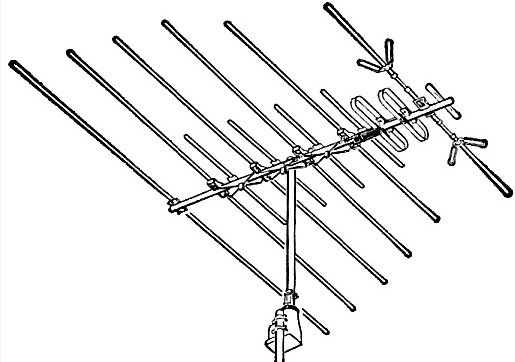
Impact of Antenna Size on Signal Reception
Antenna size has a profound impact on the quality of the signal reception. It stems from the physics: it is in direct proportion with the signal’s wavelength that the antenna is meant to catch. As a rule, larger antennas can catch weaker signals coming from greater distances.
Signal Capture
The main reason for a better signal reception is that a larger antenna’s surface is used to collect electromagnetic energy of a given wave. With the signal wavelength of roughly 300 meters, a large antenna designed to align with such a wave will generally perform much better than a much smaller one. A 150-meter antenna is likely to improve the received signal’s power by around 50% compared to a 75-meter one .
The Quality of Reception
Overall, the size of an antenna has a significant effect on the quality of reception because of the increased strength of the related electromagnetic field. As such, the larger antenna will generate higher gain and directivity, which are important when one seeks to maintain the signal’s strength and clarity. This is especially relevant to broadcasting, where covering a large area is crucial, and antennas should be able to broadcast widely without the signal becoming diluted and cut out further away.
Signal-to-Noise Ratio
In addition, when the antenna is larger, and its electromagnetic field is stronger, it is more capable of distinguishing between the actual signal and ‘noise.’ As a result, the noise ratio is greatly reduced, and antennas provide a much clearer signal. In practice, a large antenna used in a typical midsize radio station is likely to reduce noise as much as by 20 decibels compared to a much smaller alternative.
Technical and Financial Aspects
Understandably, these advantages come with a number of challenges and drawbacks, such as the cost of construction and maintenance. For a typical large array intended for communications, the costs to the organization will vary from around $10,000 to more than $100,000 in initial construction . Naturally, the larger antenna consumes more power and requires more maintenance in general, which would increase operational costs. On the technical side, the antennas are more cumbersome and require more rigid construction because of their increased exposure to environmental pressures such as wind. Not every area is suitable for the construction of a large antenna, either: in many modern urban environments, space is simply too scarce.
Technical Advantages of Larger Antennas
Larger antennas come with a number of technical advantages that are critical for high-performance communication systems. Specifically, they increase gain, improve directivity, and signal penetration, which are extremely important for broad spheres of applications ranging from telecommunications to radar operations .
First of all, larger antennas substantially increase gain, which is an ability to concentrate the impact of incoming signals in a specific direction. For instance, doubling the diameter of a parabolic dish antenna might usually raise its gain around 6 decibels (dB). This effect increases the overall efficiency of signal capturing and transmission and is especially important for such settings as communication with deep-space spacecrafts, where signals are extremely weak by design .
Another crucial advantage of using larger antennas is an improved directivity, which is a measure of an antenna’s ability to concentrate radiant energy or propagate it in a specific direction . Normally, a directivity pattern, which estimates concentrations of the waves from a large realistic antenna, becomes narrower as the size of the antenna increases. For instance, a large 100-meter wide antenna can narrow down a beam to a beamwidth of as little as 0.5 degrees, whereas a smaller 25-metre wide one might still have a beamwidth of 2 degrees on specific applications, such as radars . This effect enhances the resolution of the radar image and reduces interference from other directions and is crucial for many applications.
Another technical advantage of larger antennas is their greater ability to penetrate various obstacles, such as buildings and foliage in city and forest settings. This is a result of the large antenna energy that these obstacles and maintains strength at longer distances. This effect has a similar benefit that it provides in military settings, which also require reliable communication under different scenarios.
Nevertheless, despite all these advantages, there are several important things to note. Firstly and foremost, the cost associated with manufacturing, transporting, and deploying larger antennas might be significant, especially when there is not enough experience in doing that. For instance, the cost of manufacturing a large parabolic dish antenna can be over $50,000, which does not include the additional expenses for its support. The latter 20% needed to install it can also raise the overall cost quite significantly. Secondly, technical costs become much higher, mainly because of increased power requirements.
In addition, material quality is crucial in larger antennas, which are exposed to stronger environmental and physical impacts. The use of high-quality materials ensures that the performance of these antennas stays at the highest level throughout the entire operational lifespan and ensures the effectiveness of the higher initial investment over time.
Increased Gain and Directivity
It is well-known that larger antennas are good at achieving a higher gain and better directivity, which are important for improving the performance of communication systems. First, a gain is related to the ability of an antenna to convert the power used as an input to radio waves in the air in some fixed direction . Second, the directivity of an antenna is the measure of how concentrated the energy of a signal is in a predetermined direction or plane . These two characteristics are vital as they help an antenna transmit and receive signals at a distance and in specific directions faster, without any interference or loss of energy.
How Gain in Antenna Works
When designers and engineers create an antenna, they realize the value of gain, which can serve as a solid advantage and improve the final results. The gain is the ratio of the power produced using a specific system and the power applied to the corresponding reference antenna . In simpler words, gain is the product of a determined antenna power pattern from the power that an isotropic antenna would need to obtain the same results. As soon as engineers start increasing the size of an antenna, like in the case of satellite communication, it is possible to see some improvements in gain. An ideal slip-on home satellite dish can generate gain around 30-40 dB, while larger dishes acquired by broadcast centers may result in facilities with a gain over 60 dB.
How Directivity in Antenna Works
Directivity is the expression used to determine the concentration of energy in the signal form, along some specific direction . Larger antennas have greater directivity values, which means that they can send and receive energy in a more efficient direction. Small antennas may take advantage of several degrees of beam spread to catch the energy of specific signals, while large dish antennas cut down on this spread.
However, the use of antennas is always connected with additional complications and price issues. On the one hand, the design and development of a large-size and high gain antenna system may cost hundreds of thousands of dollars in the beginning because the used materials can be unique and the overall quality should be rather high. On the other hand, the monthly operational costs, including energy use and maintenance, are also important and need to be taken into consideration..prod_receipts. The use of a large antenna with a high gain can result in a daily power use of several kilowatts. There are no guarantees that the quality of used material is associated with a longer lifespan of an antenna and the production of breakages.

